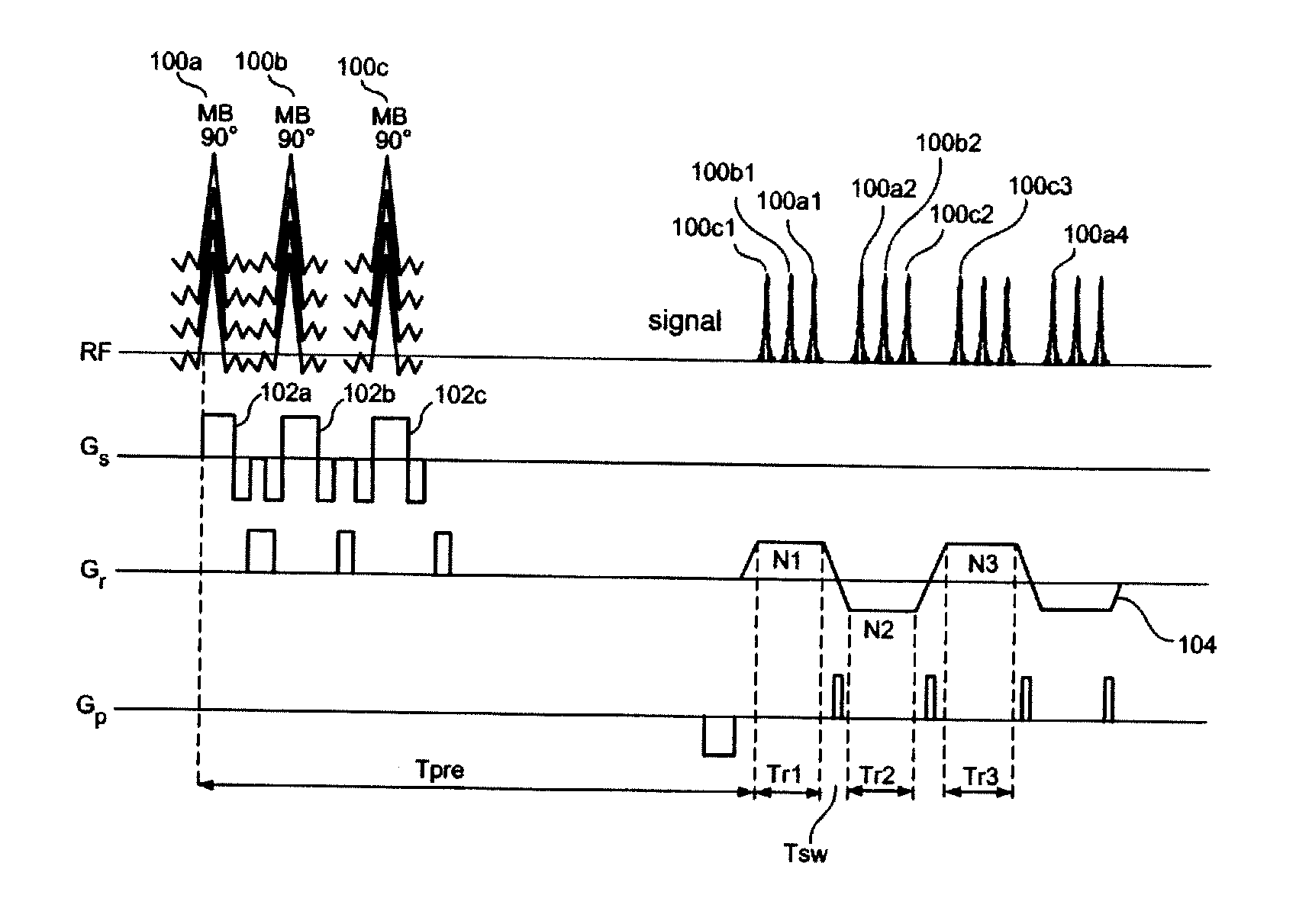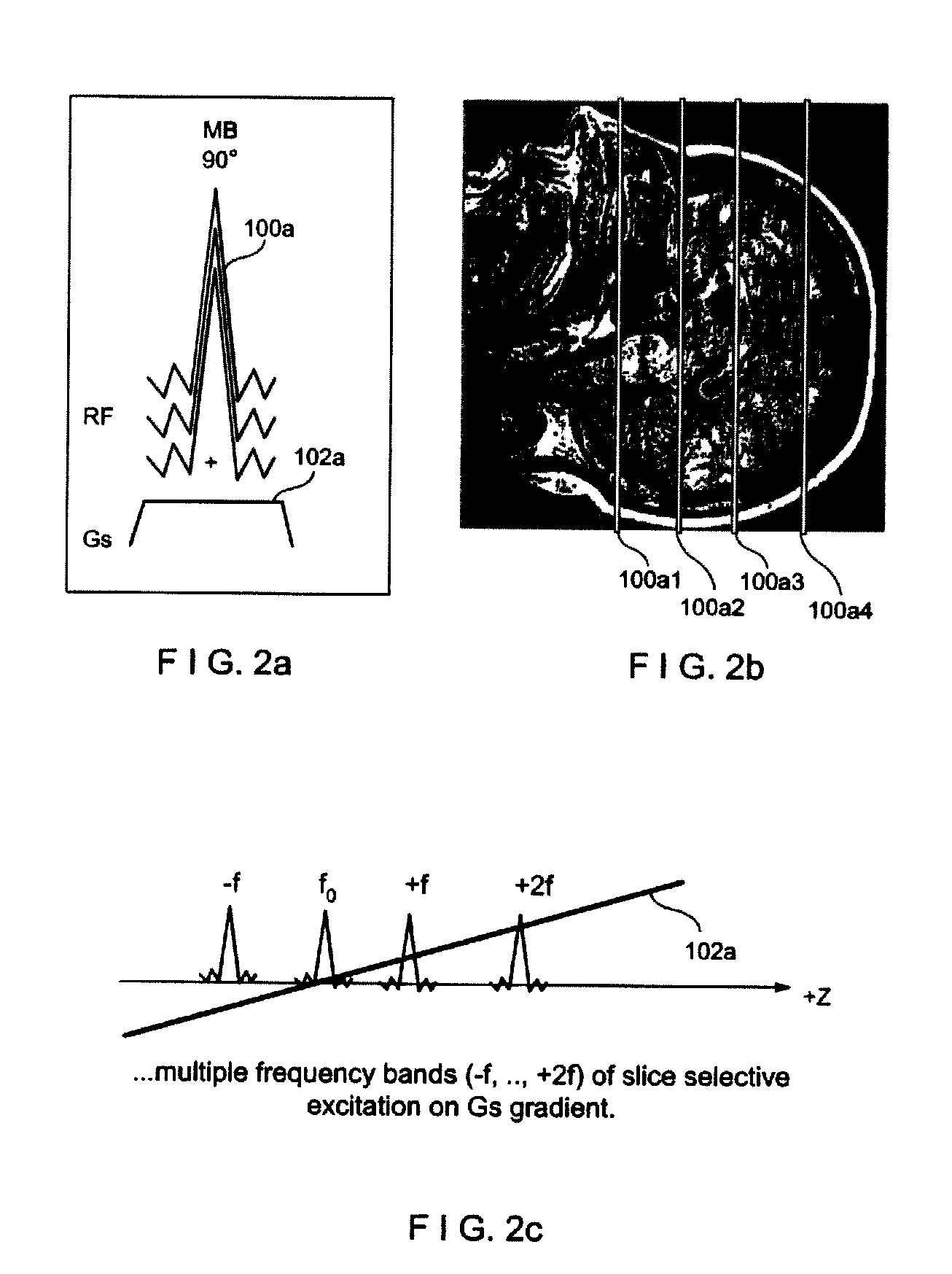Multiplicative increase in MRI data acquisition with multi-band RF excitation pulses in a simultaneous image refocusing pulse sequence
- Summary
- Abstract
- Description
- Claims
- Application Information
AI Technical Summary
Benefits of technology
Problems solved by technology
Method used
Image
Examples
Embodiment Construction
[0022]In describing examples and preferred embodiments illustrated in the drawings, specific terminology is employed for the sake of clarity. However, the disclosure of this patent specification is not intended to be limited to the specific terminology so selected and it is to be understood that each specific element includes all technical equivalents that operate in a similar manner.
[0023]FIG. 1 illustrates an example of a super-multiplexed MRI pulse sequence using the principles described above, in which MRI image data can be acquired for a total of 12 slices of a subject in an MRI scanner. A first excitation pulse 100a, labeled “MB 90°,” is a multi-band pulse that includes four frequency offsets, so that it contains excitation information for four different frequencies, slightly offset from each other as known in MB MRI, to excite four different volumes or bands in the subject. In combination with the concurrent gradient pulse illustrated on the Gs axis, RF pulse 100a excites fou...
PUM
 Login to View More
Login to View More Abstract
Description
Claims
Application Information
 Login to View More
Login to View More - R&D
- Intellectual Property
- Life Sciences
- Materials
- Tech Scout
- Unparalleled Data Quality
- Higher Quality Content
- 60% Fewer Hallucinations
Browse by: Latest US Patents, China's latest patents, Technical Efficacy Thesaurus, Application Domain, Technology Topic, Popular Technical Reports.
© 2025 PatSnap. All rights reserved.Legal|Privacy policy|Modern Slavery Act Transparency Statement|Sitemap|About US| Contact US: help@patsnap.com



